Inky has graciously contributed a review of Israel's premier naval museum.1 Based on his description, I look forward to going some day.
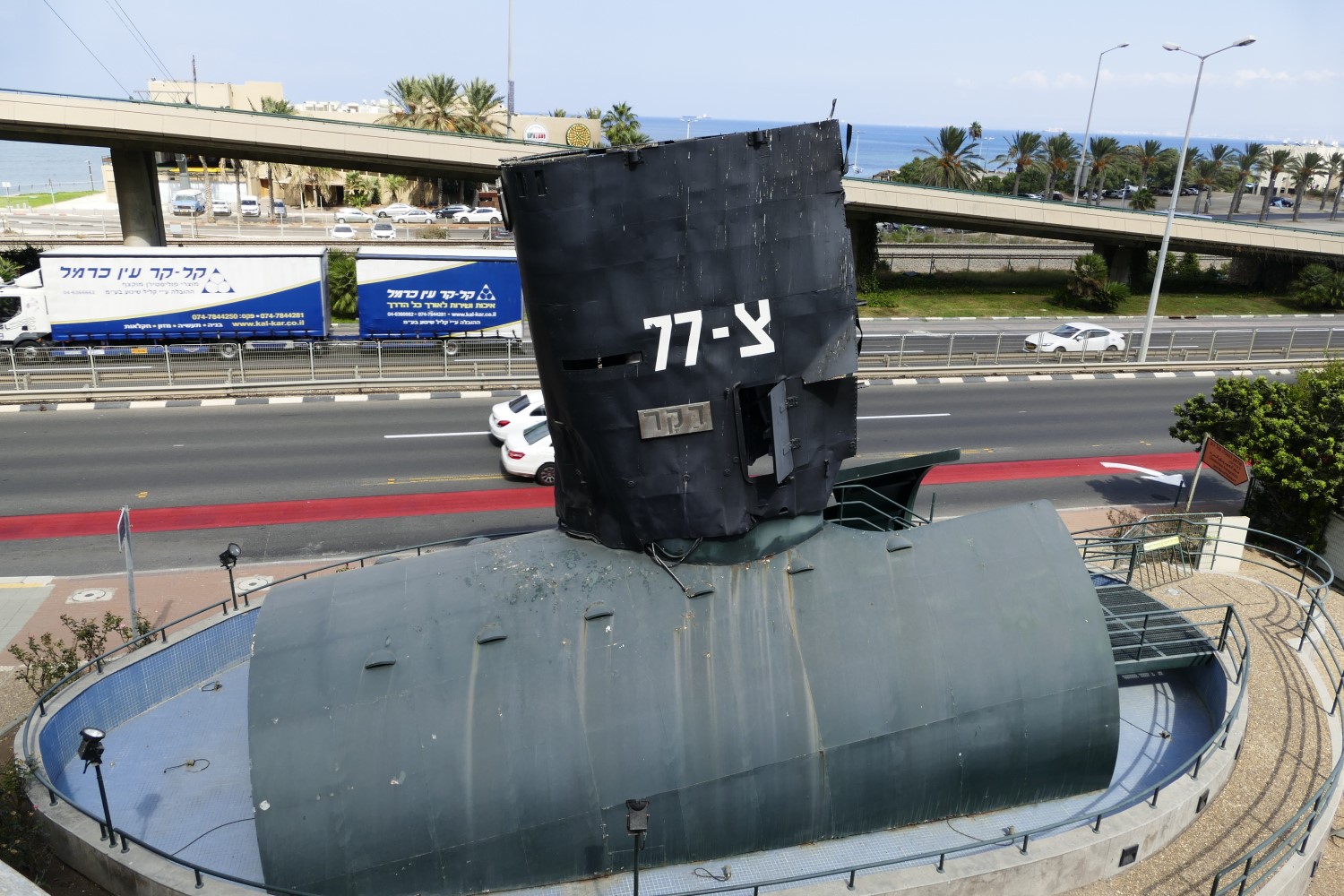
The sail of Dakar2
The museum is actually called "Clandestine Immigration and Naval Museum" — despite the biggest attraction being the navy (what with the sub on display) the museum and the objects on display explore the whole maritime history of the modern Israel — from ships used to ferry illegal immigrants during the times of the British Mandate to the formation of the independent Israel and its Navy to today. The main attractions are the Sa'ar 2-class missile boat Mivtach, submarine Gal, the salvaged sail of the submarine Dakar immediately outside the entrance to the museum, and Af Al Pi Chen, a clandestine immigration ship, built as a Royal Navy Mark 2 Tank Landing Craft in World War II. Apart from those there is a Navy museum, detailing the formative years of the Israeli Navy and various assorted vehicles or weapons — light commando craft, guns, torpedoes, missiles and so on.
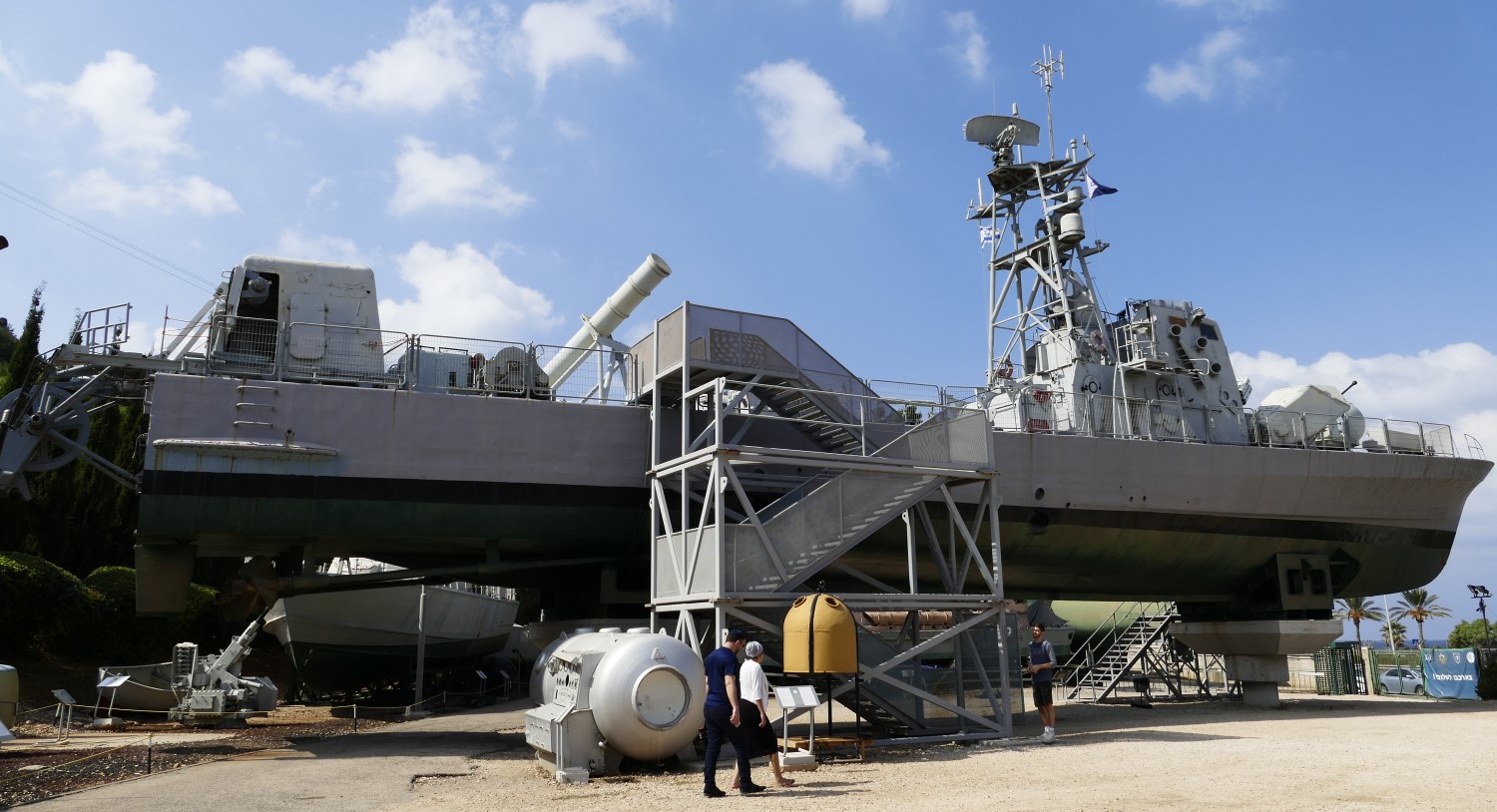
Missile boat Mivtach
INS Mivtach, a Sa'ar 2-class missile boat is one of the big attractions of the museum, but I found it to be a bit disappointing. For one thing, a lot of the boat is closed off,3 significant parts of the equipment have been removed and most importantly, there is no signage in English. At all. So you'll have to make an educated guess based on the plaques on the equipment (which are often in English). Adding to this, there is no guided tour. Which is a shame, since Mivtach had quite a prolonged and exciting career — she started her career in 1967 as a gunboat, and received an upgrade to anti-ship missiles, the Israeli-made Gabriel, in 1973. In the same year, during the Yom Kippur war, she used her weapons for the first time during the first battle in history between missile boats). Afterwards, the ship continued to receive upgrades, specifically, the towed sonar array, which can be seen on display, and Harpoon anti-ship missiles, which replaced the Gabriels. She was decommissioned in 1996.
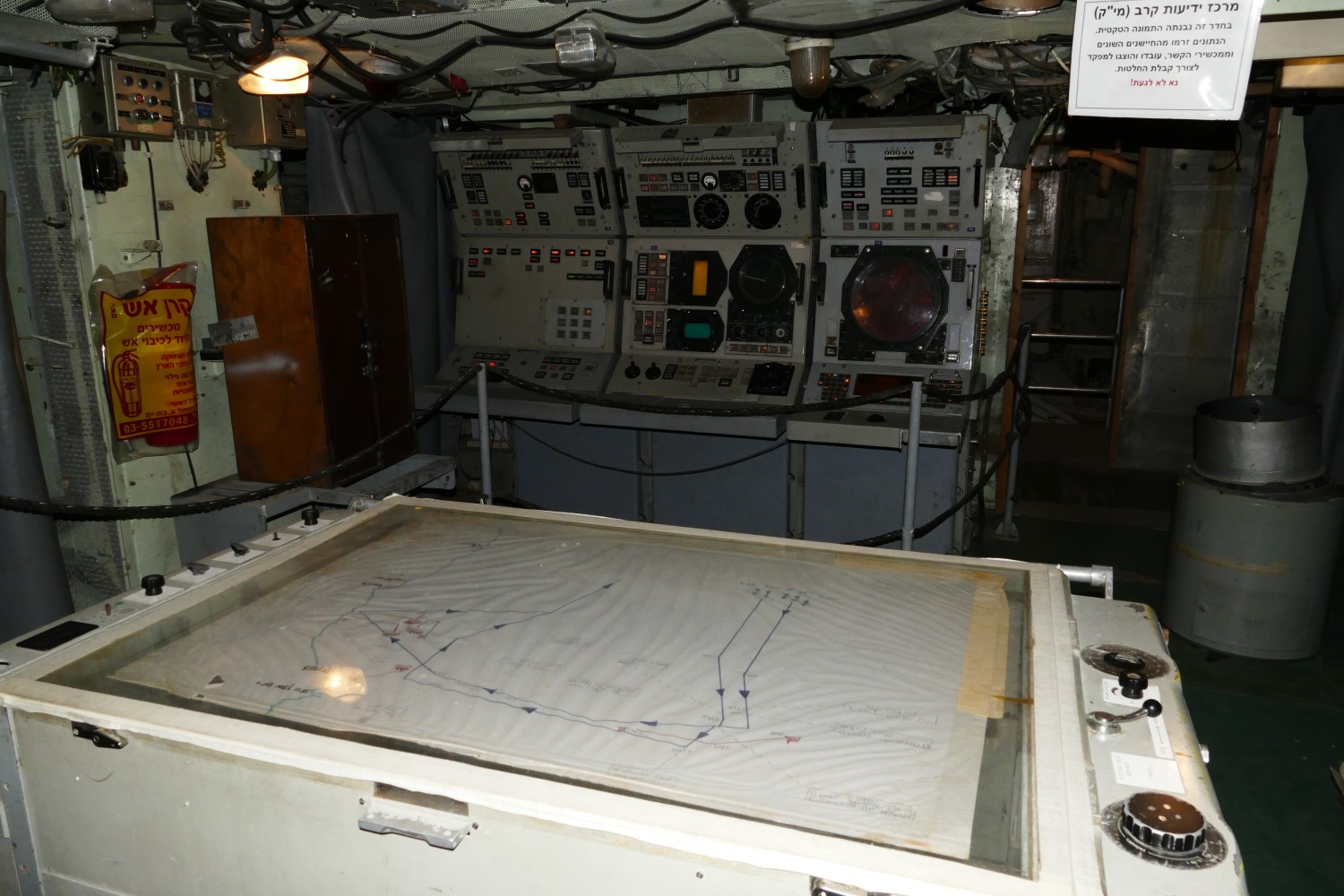
Mivtach's CIC
The museum also houses in different forms two generations of Israeli subs. Displayed outside is the conning tower of submarine Dakar. Dakar was a British T-class submarine bought by Israel in 1965. She was under refit in Britain until January 1968, when she departed for Israel. On the 24th of January the sub radioed her last message transmitting her coordinates4 and then the sub was silent. After a futile search and rescue operation, the boat was declared lost.
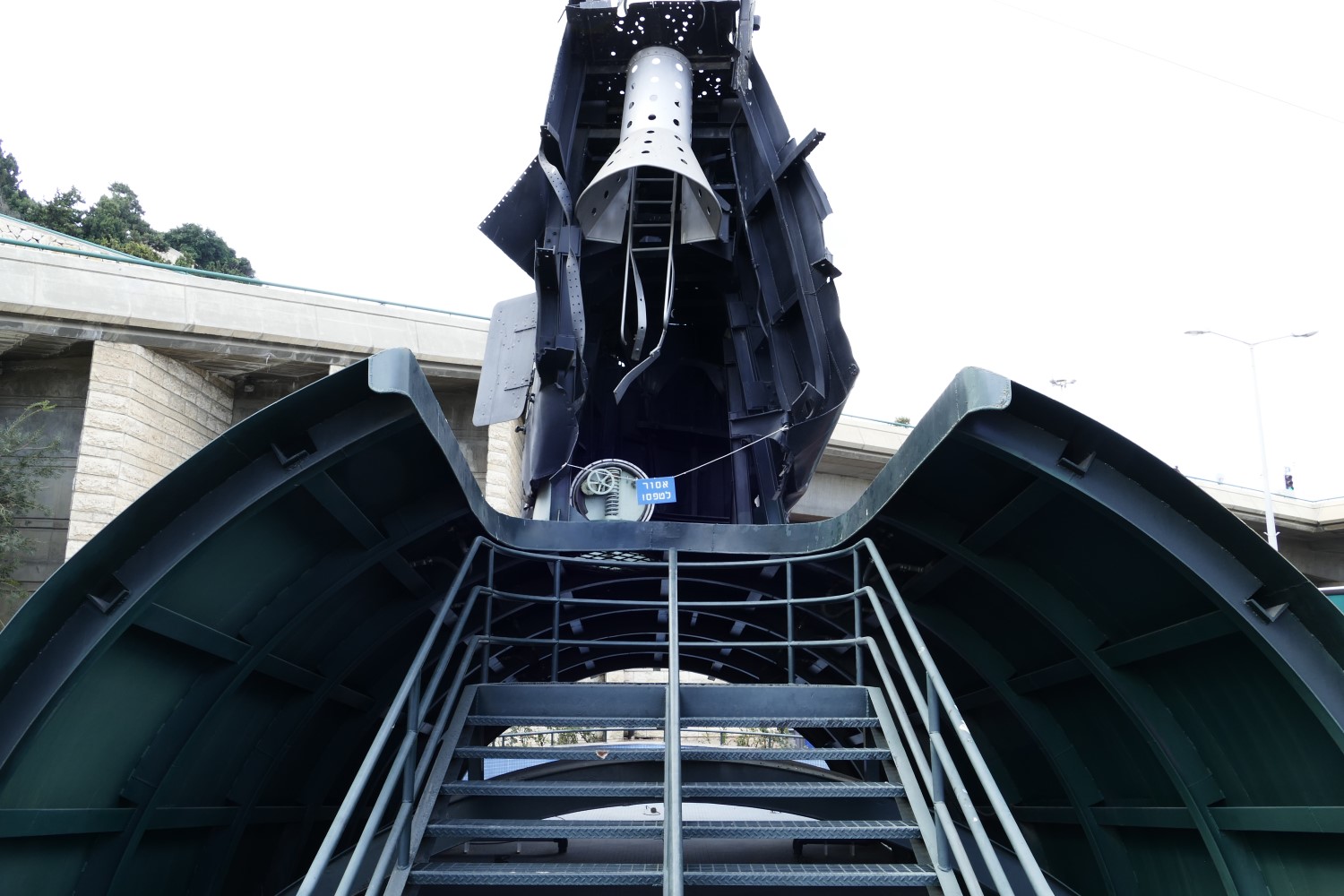
Inside the conning tower of Dakar
A year after the sub's disappearance, a fishermen found an emergency buoy southwest of Gaza, and this lead to a resurgence of interest in the search for the missing sub. This buoy can also be seen in the naval history museum, on the ground floor. However, experts examining the buoy came up with a number of hypotheses that later were proven false, delaying the search for more than 30 years. In particular, they claimed that it remained attached to the sub for more than a year after being released and that Dakar rested at the depth of 150 to 326 meters. Search efforts continued in the following years with this data in mind, but without success, mostly because these data implied that submarine strayed from her projected course, as the sea in the area where she should have traveled was much deeper.
And so it went until 1999, when a new team decided to try to check the part of the seabed directly along the original route of Dakar. Soon enough the sub was found resting on the seabed on the depth of almost 3 km, her hull imploded and broken into several pieces. One of those pieces was the conning tower, which was raised and is now on display.
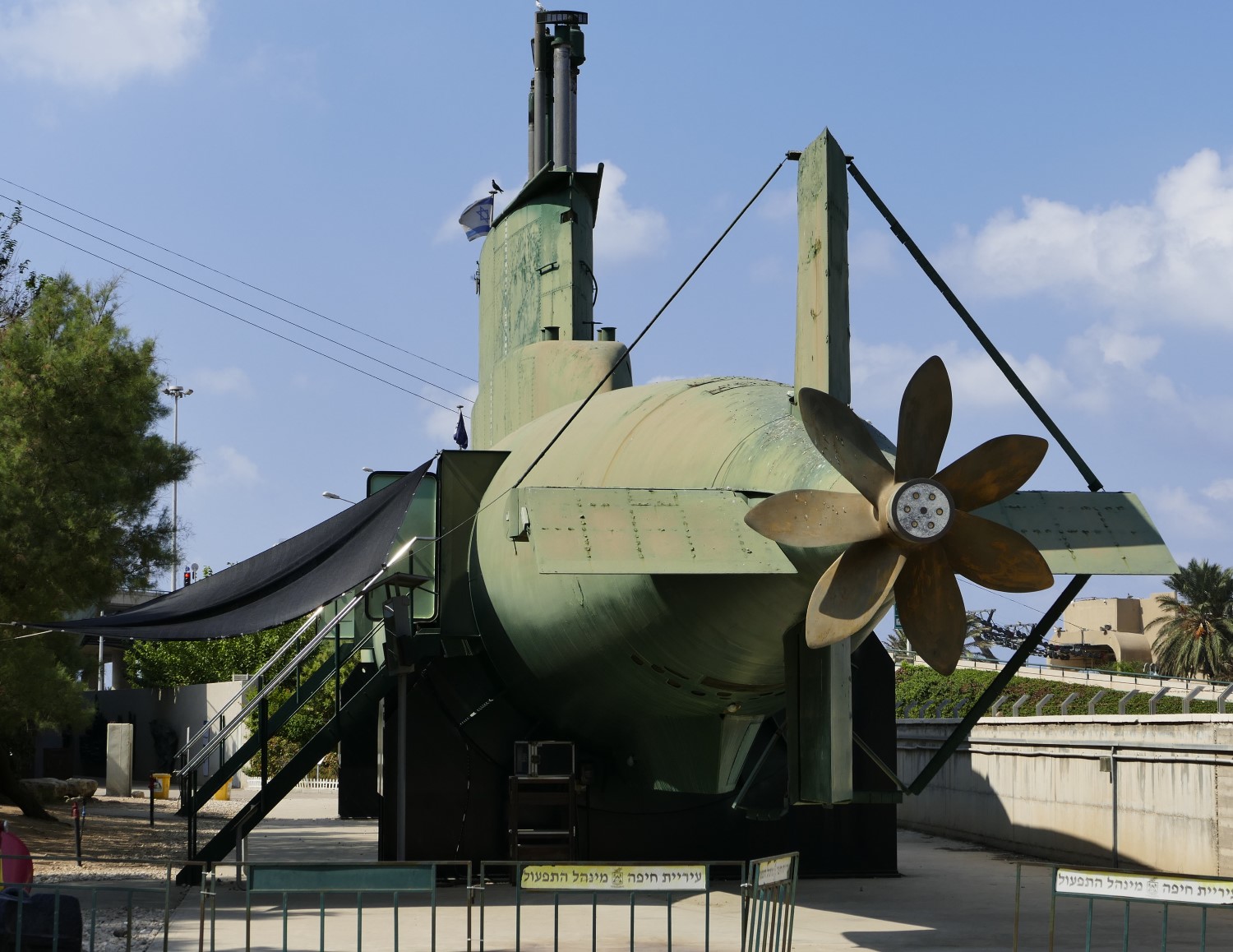
Gal on display
What exactly happened to Dakar remains a mystery to this day. The most probable version is that while she was snorkeling at relatively high speed with diesel engines engaged, a leak developed in the bow section of the boat. Apparently, it went unnoticed for long enough to upset the trim of the boat. Afterwards, everything happened very fast. The boat went into a steep dive, her diesel engines still engaged.5 She reached crush depth within 30 seconds and started to implode, the force of implosion breaking loose the emergency buoy. Afterwards the boat continued to sink, until the wreck hit the seabed at the depth of approximately 3 km, where it rests now.
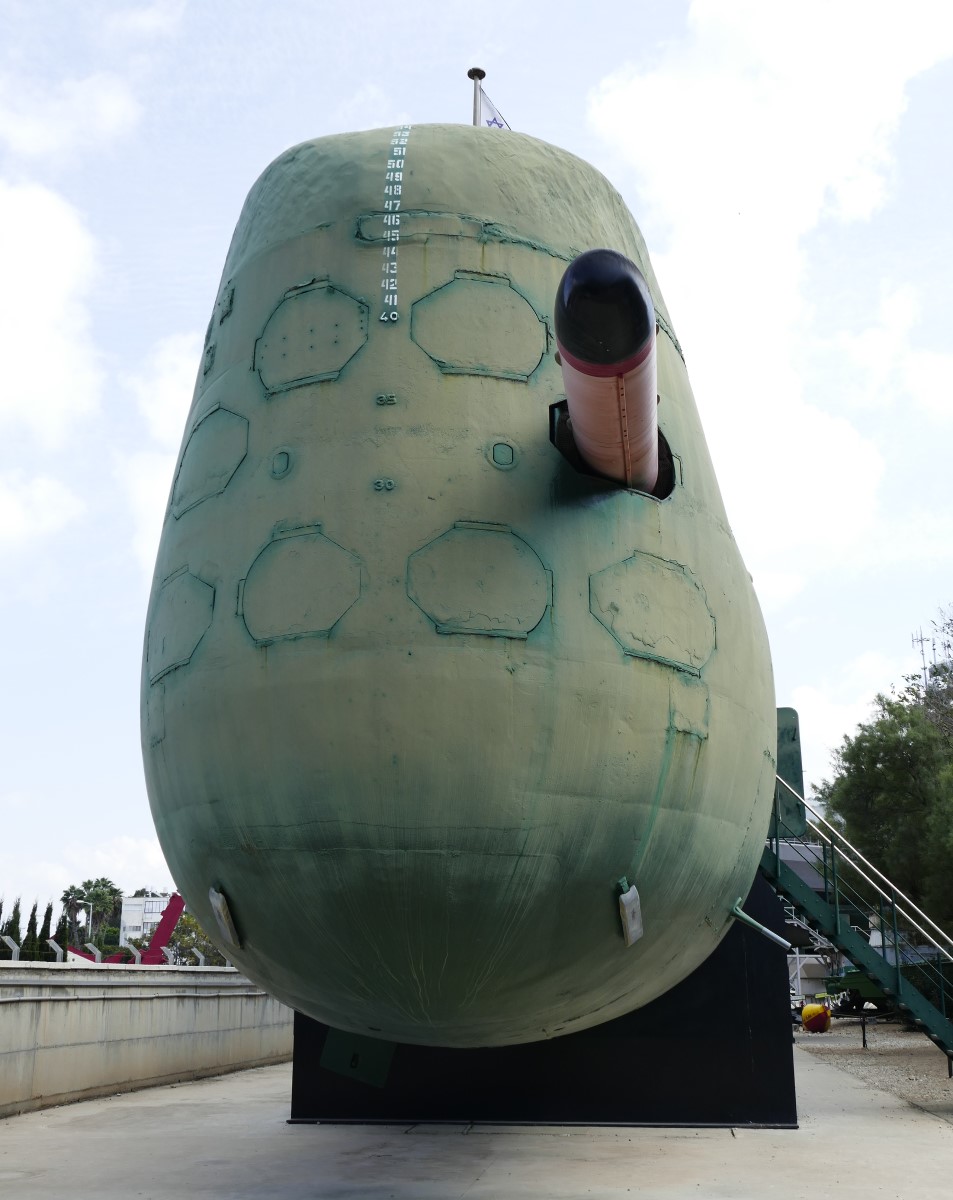
Gal's bow, showing the torpedo tubes. The Type 206 and derivatives have no reloads for their tubes.
INS Gal is a completely different beast, from a generation of boats directly succeeding the T-class. It was also the first generation of Israeli submarines that weren't bought second-hand. The Gal-class are essentially German Type 206 submarines, but customized to Israeli Navy specifications. They weren't built in Germany due to political complications, but instead by Vickers in the UK. The craft itself was a radical departure from the large, ocean-going boats of the T-class - Gal was small, nimble, and rather cramped even by submarine standards with 23 servicemen and possibly special operations personnel on board. They were continuously modified and fitted with new weapons systems, such as, at one point, Blowpipe SAM (although they were removed after a short time) and the submarine-launched version of the Harpoon anti-ship missile. The Gal-class served until the end of the 90s, when they were replaced by the Dolphin-class, also of German design. HDW tried to sell the second-hand subs, and, when that failed, one was converted into a museum piece. To make it as accessible as possible, two cutouts were made in the hull, one in the engine room and another in the torpedo room. The signage, however, is minimal, and most of the factory plaques are in Hebrew, so if you want to get the most out of the tour, having a Hebrew-reading guide is a must. The boat itself is in an excellent shape, although a few places are glassed off, probably to stop kids from taking the boat into pieces.
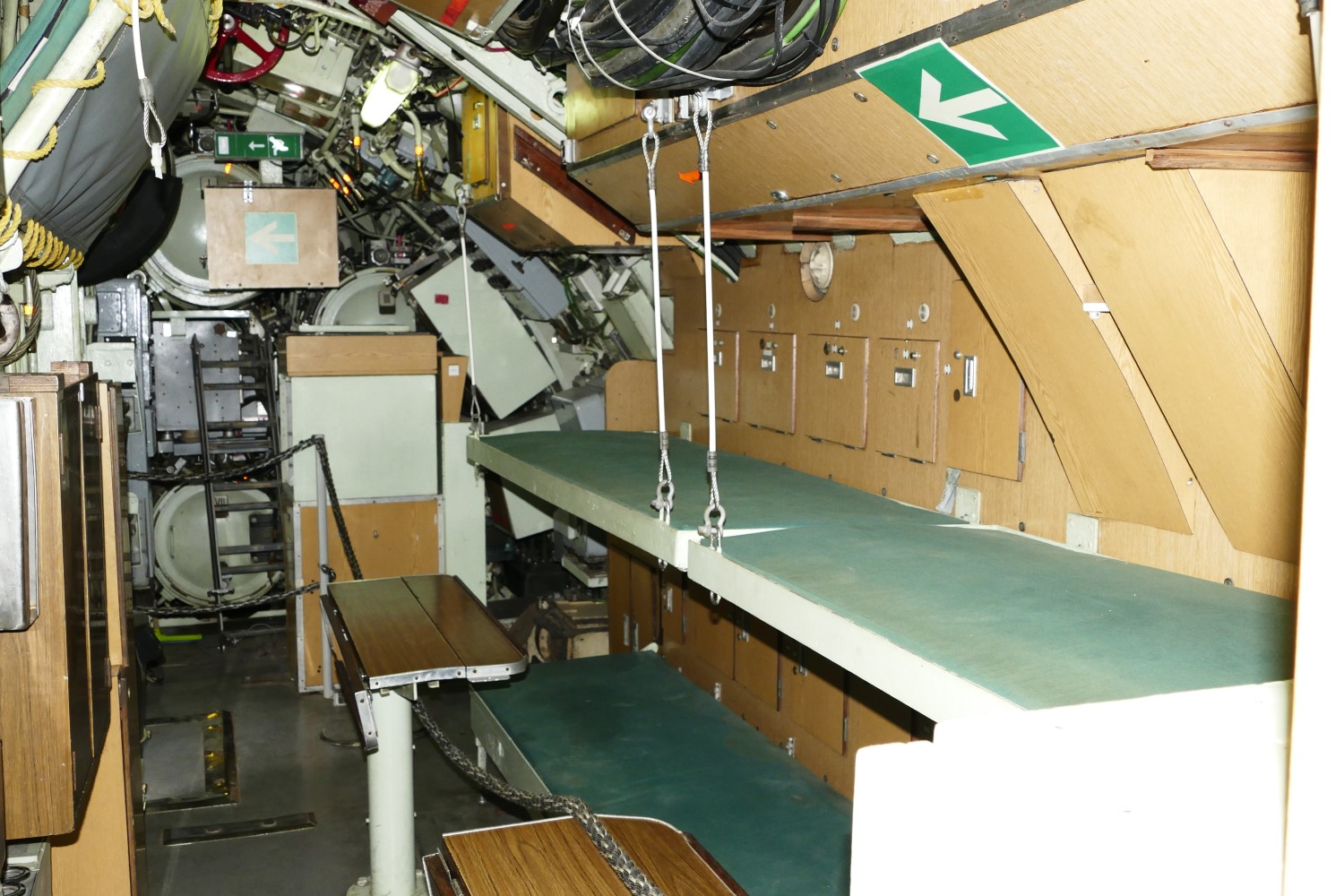
The interior of Gal. Note the top bunk can be folded down to form the back of a couch, and the torpedo tubes visible in the background.
Overall, the museum is well worth the visit, at least for the sake of the ships. It is also pretty conveniently located, a short walk away from the Bat Galim railway station terminal.
1 If you have a museum you'd like to review, email me at battleshipbean at gmail. ⇑
2 All photos courtesy of Inky. ⇑
3 The deck is almost completely off-limits sans the short section leading to the walkway. ⇑
4 She would send three more messages, but these would just be control transmission and would not include her position. ⇑
5 This might have prevented the crew from backing the electric engines and arresting the motion of the sub, or at least giving them time to blow the ballast tanks empty. ⇑

Comments
I visited this museum a couple of years after Inky - unfortunately without having read this review.
Apart from the major attractions - covered more thoroughly in the review above than they were on the signage at the museum - I think it's worth saying a few more words about the smaller artifacts. They have a range of individual weapon systems on display which, while restricted (as Inky says) to the formative years of the Israeli Navy, provides a nice little cross-section from the transition from guns to missiles. There's also a section with a range of radar antennas, though without explanatory signage this will be of little interest to most people.
If you're visiting this museum you'll probably also be interested in the adjacent Israeli National Maritime Museum, which contains artifacts from the much longer history of seafaring on this part of the Mediterranean. Both museums were very poorly attended when I was there: I was the only visitor at the Naval Museum, and there was only one other family at the Maritime Museum.
Finally, one more point of historical interest: though INS Mivtach was built in Cherbourg, she was not one of the five boats exfiltrated a few years later in the Cherbourg Project.